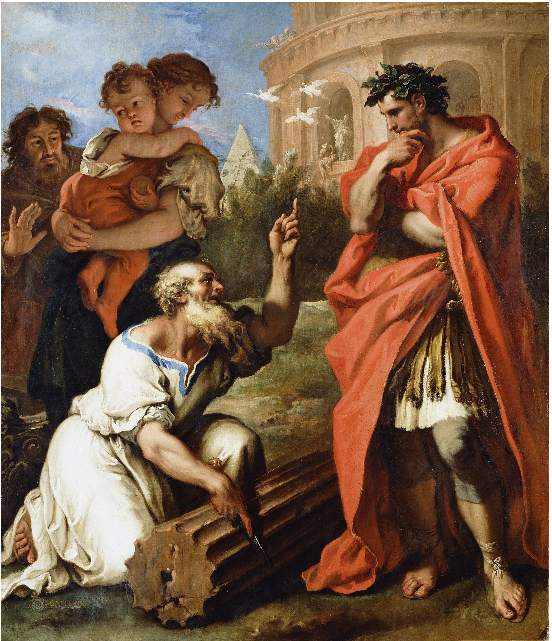Attus Navius on:
[Wikipedia]
[Google]
[Amazon]
 In Ancient Roman mythology, Attus Navius was a famous
In Ancient Roman mythology, Attus Navius was a famous
 In Ancient Roman mythology, Attus Navius was a famous
In Ancient Roman mythology, Attus Navius was a famous augur
An augur was a priest and official in the ancient Rome, classical Roman world. His main role was the practice of augury, the interpretation of the will of the List of Roman deities, gods by studying the flight of birds. Determinations were ba ...
during the reign of Tarquinius Priscus
Lucius Tarquinius Priscus, or Tarquin the Elder, was the legendary fifth king of Rome and first of its Etruscan dynasty. He reigned for thirty-eight years.Livy, ''ab urbe condita libri'', I Tarquinius expanded Roman power through military conq ...
.
When Tarquinius desired to increase the number of the equestrian centuries, and to name them in his own honour, Navius opposed him, declaring that it must not be done unless the omens were propitious, and, as a proof of his powers of divination, cut through a whetstone with a razor. Navius's statue, with head veiled ''( capite velato)'', stood in the Comitium
The Comitium ( it, Comizio) was the original open-air public meeting space of Ancient Rome, and had major religious and prophetic significance. The name comes from the Latin word for "assembly". The Comitium location at the northwest corner of ...
, next to the senate-house (Livy 1.36.5); the whetstone and razor were buried in the same place, and a puteal placed over them. According to Dionysius it was Tarquinius Priscus who set the statue up, "in front of the senate-house near the sacred fig-tree; it was shorter than a man of average height and the head was covered". The sacred fig-tree was named after Attius Navius: Navian.
It was reported that Navius was subsequently put to death by Tarquinius. According to Schwegler Schwegler is a Swiss surname. Notable people with the surname include:
*Albert Schwegler (1819–1857), German philosopher, theologian, and historian
*Christian Schwegler (born 1984), Swiss footballer
*Emil Schwegler (1879–1968), Swiss-born Ameri ...
, the puteal originally indicated that the place had been struck by lightning, and the story is a reminiscence of the early struggle between the state and ecclesiasticism.
References
{{Reflist *F. Coarelli, '' Lexicon Topographicum Urbis Romae'', s.v. *Livy
Titus Livius (; 59 BC – AD 17), known in English as Livy ( ), was a Roman historian. He wrote a monumental history of Rome and the Roman people, titled , covering the period from the earliest legends of Rome before the traditional founding in ...
, Ab urbe condita
''Ab urbe condita'' ( 'from the founding of the City'), or ''anno urbis conditae'' (; 'in the year since the city's founding'), abbreviated as AUC or AVC, expresses a date in years since 753 BC, the traditional founding of Rome. It is an ex ...
, 1.36
*Dionysius of Halicarnassus
Dionysius of Halicarnassus ( grc, Διονύσιος Ἀλεξάνδρου Ἁλικαρνασσεύς,
; – after 7 BC) was a Greek historian and teacher of rhetoric, who flourished during the reign of Emperor Augustus. His literary style ...
3.71.5
*Sextus Aurelius Victor
Sextus Aurelius Victor (c. 320 – c. 390) was a historian and politician of the Roman Empire. Victor was the author of a short history of imperial Rome, entitled ''De Caesaribus'' and covering the period from Augustus to Constantius II. The work w ...
, ''De viris illustribus'', 6
* Schwegler, ''Römische Geschichte'', bk. xv. 16
7th-century BC Romans
6th-century BC Romans
7th-century BC clergy
6th-century BC clergy
Roman augurs
Executed ancient Roman people
People executed by the Roman Kingdom